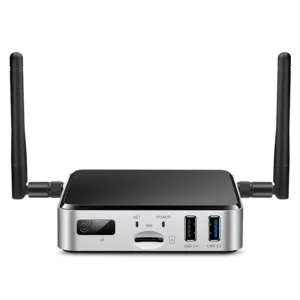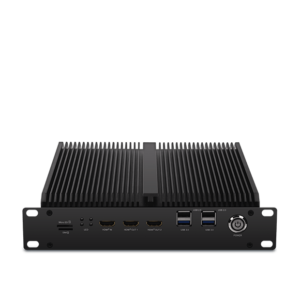AI on Edge Devices vs. Cloud AI: Pros and Cons
AI on Edge Devices vs. Cloud AI: Pros and Cons
Blog Article
A Comprehensive Information to Deploying AI on Edge Devices
Real-World Programs of AI on Edge Devices
Synthetic intelligence (AI) is no more limited to the kingdom of large, centralized data centers. Because of developments in engineering, side units today perform a vital position in deploying AI immediately wherever knowledge is generated. But what does AI on side products suggest, and why is it producing this type of buzz? Here, we'll explore how edge ai devices operates in actuality through edge units and learn their wide selection of practical applications.

What's AI on Side Devices?
AI on edge devices describes deploying synthetic intelligence formulas directly on devices like smartphones, cameras, drones, or IoT sensors. They do not need usage of centralized hosts for handling data; as an alternative, they perform examination and choices domestically, making the process faster, more effective, and usually more secure.
The "edge" here simply refers to research performed close to or at the foundation of knowledge technology, as opposed to depending on the cloud. That change is pushed by the requirements for real-time data running and the need to decrease latency, improve solitude, and lower bandwidth usage.
Important Real-World Applications of Side AI
1. Smart Monitoring
AI-powered cameras designed with skin recognition, action recognition, and anomaly detection are transforming security systems. Edge devices in this domain can analyze movie revenues in real-time to spot dubious activities, eliminate false alarms, and enhance public safety. For example, AI calculations can detect unusual activities and alert authorities straight away without the need to send video knowledge to a main host for analysis.
2. Healthcare Checking
Wearable devices and lightweight medical gear are leveraging ai m.2 module for handling health data more efficiently. Edge-based AI in products like health trackers and smartwatches displays users' vitals, such as for example heartbeat, oxygen levels, or body force, in real-time. These techniques analyze data locally and give fast feedback, paving just how for faster treatment all through emergencies.
Beyond wearables, sophisticated medical imaging devices built with on-device AI may find signals of disorders like cancer, enabling earlier in the day diagnoses even yet in rural parts without web connectivity.
3. Autonomous Cars
Self-driving vehicles are among probably the most well-known types of side AI in action. With detectors, cameras, and LiDAR methods providing as data places, AI computations take place onboard these cars to create split-second decisions. From detecting pedestrians and limitations to moving town roads, edge AI assures that the automobile operates reliably and efficiently. The real-time running capability of edge units removes the reliance on high-latency cloud systems, ensuring protection in life-critical scenarios.
4. Retail Analytics
Edge products in retail settings are supporting companies analyze client behavior. Wise racks and AI-equipped cameras can identify client preferences, check stock, and actually customize in-store activities in real time. The information created from these units assists stores make educated decisions, increase customer satisfaction, and improve supply management.

5. Commercial IoT
Factories and professional crops are adopting edge AI to revolutionize their checking and automation processes. AI-powered sensors on machinery identify potential faults a long time before they lead to costly failures. Predictive preservation pushed by edge AI decreases downtime, enhances production, and guarantees protection on the manufacturing floor.
6. Personalized Experiences in Client Units
Your smartphone is a prime exemplory instance of how edge AI personalizes consumer experiences. Features such as for example style personnel, flexible camera options, and on-device language translation use real-time AI to respond to person needs without sending painful and sensitive data to outside servers. That fosters both convenience and privacy for the conclusion user.
The Growing Affect of Side AI
The ownership of AI on side products remains to spike, driven by industries' increasing need for low-latency, real-time processing, and higher information privacy. Its purposes are reshaping industries ranging from healthcare and automotive to public protection and retail. By adding AI's power nearer to wherever data is generated, side units aren't only improving effectiveness but additionally showing the unlimited possible of development in the current related world. Report this page